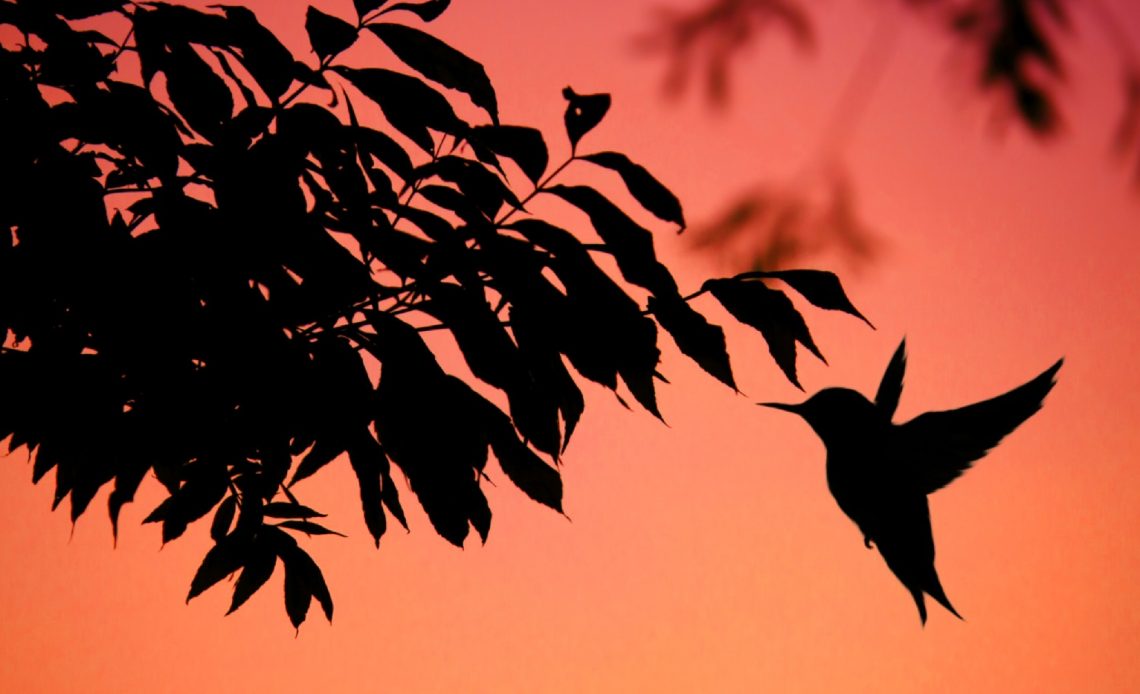

We’re here to help! Wild Yards is a completely free website that is 100% dedicated to helping you create a wildlife-friendly, sustainable yard. Read more
WildYards is reader-supported. When you buy a product through a link on our site, we may earn a comission. Every product is independently selected by our (obsessive) editors and our reviews are unbiased and objective. Read more about our mission or our privacy policy.
If you have ever seen a hummingbird fly, you’ll likely agree it’s a treat for the eyes. Their wings become blurry with how fast they are moving, almost like the paddles on a fan. We know that hummingbirds use those incredible wings to hover around and get to their food, often eating the nectar from the flowers in our gardens and treats from our feeders. But, how high do hummingbirds fly?
Hummingbirds can fly up to a height of about 500 feet above the ground (as they cross continents during migration). However, it is essential to understand that a hummingbird’s flying capabilities don’t stop and start with how high they can reach – they are truly fascinating flyers!
How high will hummingbirds fly for food?
Given that hummingbirds live primarily on the nectar in flowers, you will normally find these curious critters flying quite low. You may come across hummingbirds flying at about eye level or even lower, depending on where the best nectar sources are likely to be.
However, hummingbirds can and will fly over gardens and fields to better detect food, searching for brightly colored flowers. Therefore, they will often fly around the tops of trees as they look for their food.
It’s unlikely that a hummingbird will choose to fly so high up for food. After all, they get much of their nectar and water at eye level or lower, meaning they will normally fly at height when scouting suitable nesting areas, or when they are mid-migration.
If you are attracting hummingbirds to your garden, don’t worry about putting flowers too high up or too close to the ground. They will find the nectar they love regardless of height. There are plenty of potted flowers hummingbirds adore, for example!
How low do hummingbirds fly?
Hummingbirds are known for continuously flying, or hovering, while they eat. They have even been spotted very close to the ground, flying near low-growing flowers. However, their small, adaptable bodies allow them to reach altitudes that other small birds may not ever achieve.
Hummingbirds will choose to fly low when they want to inspect certain flowers or food sources a little more closely. As they are constantly hovering, they can get closer to food and water sources with a little more precision than other birds. This means that – while hummingbirds have fairly broad tastes on the whole – they can take their time to be discerning.
Even though hummingbirds can fly very low if they find interesting flowers, they prefer to hover while they feed. Therefore, it is not a good idea to place any food on the ground for them. It’s unlikely a hummingbird will stop to peck along the ground! Hummingbirds will stop flying occasionally, but not in this case.
Local cats and vermin may attack feeders if they are grounded, further deterring hummingbirds from using them.
It is best to place your hummingbird feeder between four and six feet off of the ground. Place it in an easy-to-reach area, and ensure that it is always full of fresh nectar for your little friends!
How high do hummingbirds normally fly?
The altitude at which hummingbirds typically fly greatly depends on what they are doing. Hummingbirds will fly very low for food if it’s available, just as they will fly relatively high during migration so they can survey the land in more detail.
Generally speaking, you will usually find hummingbirds flying just above the treetops. This is because hummingbirds lay their nests in big, verdant plants. They choose trees based on their locations near food and water, and the shade they can provide.
So, if you are out looking for some hummingbirds, look up before you look down.
At what altitude do hummingbirds fly when they migrate?
During migration, hummingbirds fly at about 500 feet in the air, which is fairly high for its given size. They also fly right above the waves, sometimes, when they are migrating over the Gulf of Mexico! It is no wonder that their migratory journeys can last nearly an entire day.
Hummingbirds commonly fly during migration for between 18 and 22 hours. Given that part of this journey takes place over the ocean, they cannot land – and therefore, have to be completely self-reliant until they reach their destinations.
Few other birds – certainly at the hummingbird’s size – show this kind of endurance. Interestingly, studies show hummingbirds don’t always migrate based on specific plant availability.
Why are hummingbird flight patterns so interesting?
The hummingbird’s flying technique is certainly unique – they can flap their wings up to 3,100 times per minute and can keep going for hours on end. They are also the only bird in the animal kingdom – that we are aware of – that can fly or hover backward.
Hummingbird flight is fascinating because these tiny birds show incredible athleticism. Their endless need for nectar and other food is understandable thanks to their intense calorie burning.
However, there’s no need to worry about where you place or grow the hummingbird-friendly flowers in your garden. Grow a bed of flowers at ground height, or raise your pots a little higher – if the nectar’s sweet enough, hummingbirds will come.
Don’t be tempted to lower your bird feeder too much, either. Again, if you stock your hummingbird feeder full of sweet nectar, you’ll be seeing flutterers visit you soon.
